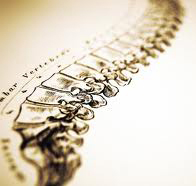How do I answer – Myotherapy compared to Chiropractic?
Comparing Myotherapy to Chiropractic is an excellent way to help a patient understand what you are really doing because … they are more similar than we admit!
*Note: This post is written for professionals so may be more technical than others.
‘More similar than we admit?!’
‘What the … ?’
I can feel the defences going up from Myotherapists everywhere!
‘I don’t crunch bones!’ ‘My treatments are longer than three minutes!’
Okay, okay, let me explain.
Chiropractic theory is all about alignment.
The theory goes something like this:
> The nervous system innervates everything in the body
> Therefore if the nervous system is healthy then every organ in the body will be healthy
> Now, the central nervous system becomes peripheral as it exits the spinal foramina where the nerves are unmyelinated and their most vulnerable
> Therefore better posture of the vertebral joints, discs and foramen and better overall spinal posture will lead to optimum nerve function and ultimately optimum function of every organ of the body.
And so the practice is to gently or forcefully, depending on practitioner, manipulate vertebral joints and improve alignment and subsequently function.
In my practice of Myotherapy, I am actually trying to achieve the same.
When I practice Myotherapy I often explain that:
‘What I am really doing is changing the way your body moves. Your posture. I’m doing this by manipulating specific muscles and tendons. A lot of people don’t realise but you can actually adjust posture, joint position and movement by manipulating the muscles and tendons … if you know what you’re doing.’
Or I will put it in these words:
‘Unless your body learns to move differently then we will never solve your pain long term. So I am actually more interested in restoring function than just treating pain. So this means that I may work in areas where the pain ‘isn’t’ because for every ‘one’ long term pain, there are three or more restrictions contributing to it.’
My years of observation have led me to the conclusion…
… that subtle myofascial restrictions in groups of muscles work together in functional units to deliberately modify movement or change joint position. An exaggerated example would be the trigger point activity in the rotator cuff musculature actively restricting movement of the glenohumeral joint for 18-36 months (frozen shoulder). A more subtle example is something I have observed in pelvic girdle where, for example, the left adductor group causes a subtle restriction in conjunction with the right iliolumbar muscles. Most of the time the patient knew about their chronic right back pain but had no idea that the adductors were contributing, their pelvic posture was unbalanced and their gait was uneven! The solution for this scenario is to ‘realign’ the pelvis and restore a normal gait by resolving both the the Iliolumbar restrictions AND the adductor restriction.
So patients who have seen Chiropractors often ask me ‘Is my pelvis out?’ and frankly there is no point changing the terminology. In the scenario I just described I can quite honestly say: ‘Yes your pelvis is out, and I’m putting it back’. Of course my way of ‘putting it back’ is different to the Chiropractor but in essence I am restoring alignment (the only exception is when the sacroIliac joint is ‘locked’ out of position). The pain is resolved and so ultimately how the patient understands what just happened isn’t really the point. The point is, they have restored function and no pain. They are happy.
Alignment.
When I work I am always pursuing symmetry. Does the head rotate right and left equally? Do the right and left adductor magnus feel the same? Do the right and left quadratus lumborum feel the same? My aim is to restore full pain-and-stiffness-free movement right and left. When this is achieved, the body’s alignment has changed. The body will begin functioning differently and heading toward ‘normal’ function.
So, in some respects our end goal in treatment is similar to a Chiropractor. Don’t fight it. Just go with it.
If this article has been useful then punch your name and email into the side bar or on the front page and have new articles sent to you as I write them.
– Tim












Leave a Reply
Want to join the discussion?Feel free to contribute!